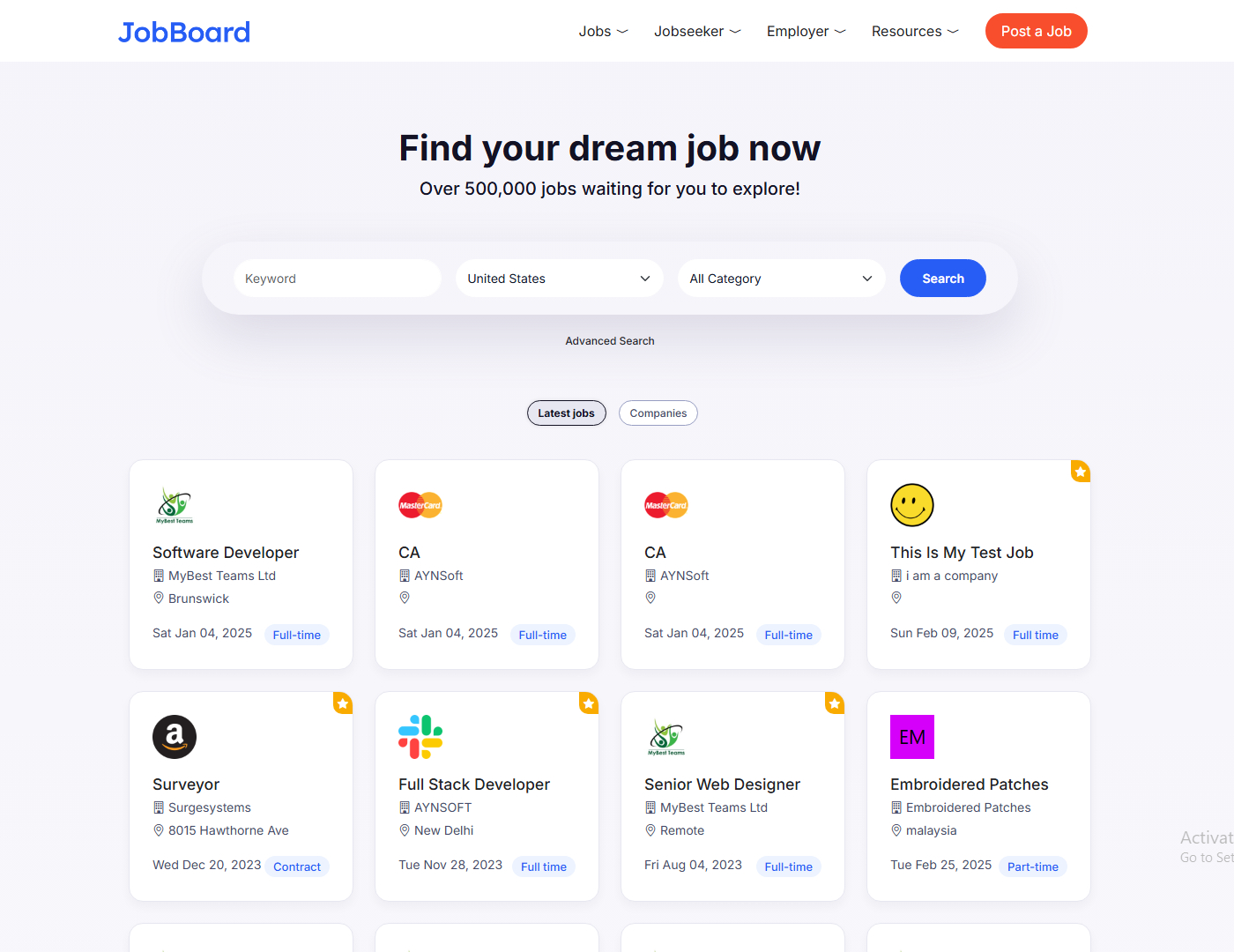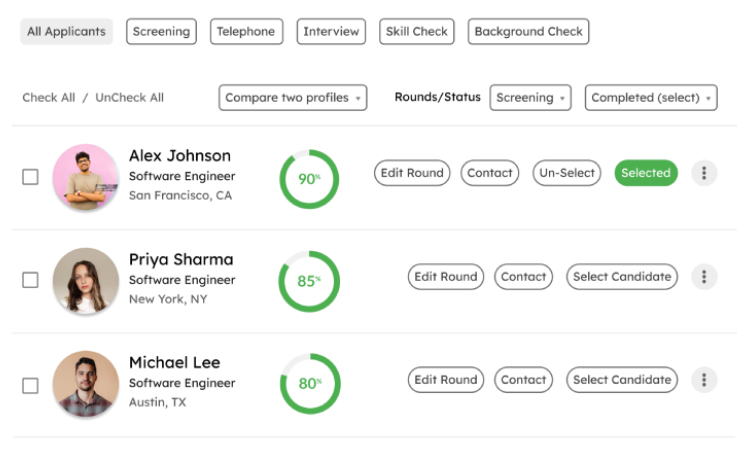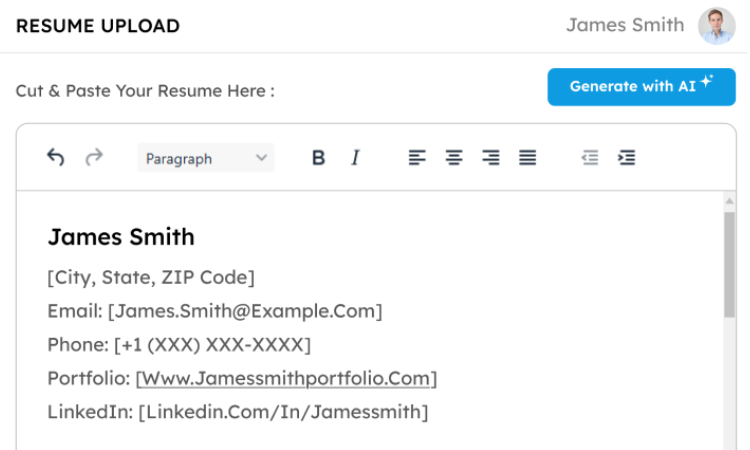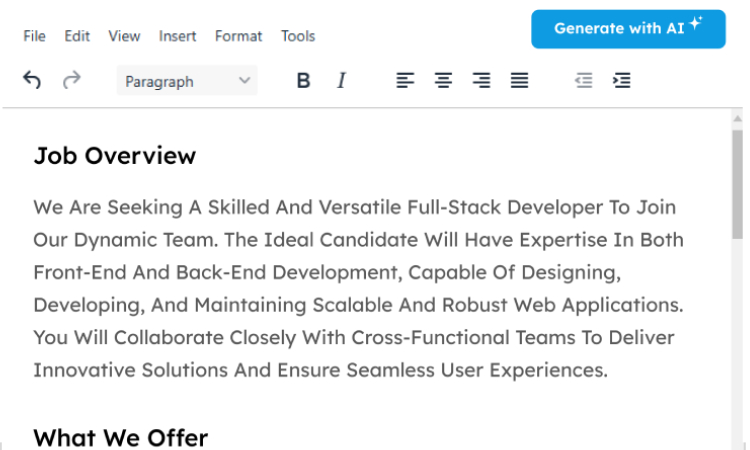The recruitment industry adds £44 billion to the UK economy and achieved a remarkable growth of 21.7% between 2020 and 2021. You have picked the perfect time to start a recruitment agency.
The recruitment sector thrives today, despite the original challenges from the COVID-19 pandemic. Recovery has been strong, with talent needs growing in sectors of all types. Opportunities abound whether you target food processing, healthcare, or other industries.
We have created this complete guide to help guide you through starting your own recruitment agency. You will learn everything needed to build a successful recruiting business in 2024 – from understanding the market and choosing your niche to setting up operations and securing your first clients.

Understanding the Recruitment Agency Business
A recruitment agency bridges the gap between employers and job seekers. These agencies make the hiring process smoother for businesses and help candidates find better job opportunities.
What is a recruitment agency
A recruitment agency helps organizations find the right employees through specialized services. The agency takes care of everything in the hiring process, from finding candidates to setting up interviews. The numbers show that more than 50% of candidates prefer to find jobs through recruitment agencies [1].
Types of recruitment agencies
The recruitment industry covers several different business models that serve specific market needs:
- Retained Search Firms: These executive search firms take upfront payment and usually charge 30-35% of the position’s salary. They focus on senior-level placements [1].
- Contingency Agencies: These firms work with multiple clients at once and follow a “no win, no fee” approach [1].
- Staffing Agencies: These agencies specialize in temporary and contract staffing. They handle payroll and benefits for their placed workers [1].
- RPO (Recruitment Process Outsourcing): These firms offer complete hiring solutions by managing the entire recruitment process [1].
Current market opportunities
The US recruitment and staffing industry offers great growth potential for new agencies. The industry generated USD 218.00 billion in 2022 [2]. Right now, only 12,554 employment and recruitment agencies operate in the US [2]. The market is nowhere near as crowded as other regions like the UK [2]. Temporary and contract staffing shows strong potential in the industry. US staffing agencies hire 16 million temp and contract workers each year. About 3 million people work during an average week [2]. On top of that, 80% of executives want to add US contingent talent to their teams [2].
The growing gig economy creates new opportunities, especially in specialized sectors. The market trends point to a rising need for skilled professionals, especially when you have IT and software development roles. Industry experts expect about 6% annual growth [3].
Planning Your Agency Launch
A successful recruitment agency starts with careful planning and smart decisions. Three elements will determine your agency’s success: the right niche, an effective business model, and realistic startup costs.
Choose your recruitment niche
Your chances of success increase when you select a specialized niche instead of pursuing general recruitment. Tools like Google Trends, BLS data, and industry reports help identify promising sectors [4]. You should think about these factors while evaluating potential niches:
- Your industry knowledge and connections
- Market demand and growth projections
- Competition levels in your target area
- Geographic opportunities and limitations
Specialization helps you become an authority in your chosen field. This leads to higher fees and more repeat business [5].
Set your business model
Your agency’s operations and revenue potential depend on the recruitment business model you select. Several proven models exist:
Contingency Model: You get paid 15-30% of the placed candidate’s basic salary after successful placement [6].
Retained Search: The payment splits into three parts – upfront fee, candidate selection fee, and final placement fee [6].
On-Demand Recruitment: This works on project or hourly billing and supports in-house teams well [6].
Each model aligns with different business goals. To cite an instance, see how contingency recruitment suits lifestyle businesses and quick returns. Retained search works better if you want to build long-term client relationships [7].
Calculate startup costs
Starting a recruitment agency requires an original investment between USD 3,000 and USD 250,000 [8]. Here are the essential startup costs:
Core Requirements:
- Business registration and legal setup
- Insurance and licensing
- Website development and branding
- Essential recruitment software
- LinkedIn Recruiter subscription (approximately USD 1,080 monthly) [9]
New agencies typically fall into three startup categories:
- DIY approach: USD 3,000-10,000
- Partial outsourcing: USD 11,000-34,000
- Full-service setup: USD 35,000-250,000 [8]
Your chosen niche and business model affect these costs. Staffing agencies that focus on temporary placements just need more working capital for payroll. Executive search firms require higher investment in professional networking and tools [8].
Setting Up Your Agency
Legal compliance is the foundation of a successful recruitment agency. Your business needs proper registration and licensing to protect itself and build credibility with clients and candidates.
Register your business
Business registration processes change based on your location. You need to establish your legal entity and tax status first. Choose your business structure – sole proprietorship, partnership, LLC, or corporation [10]. Each structure comes with different tax implications and liability protections.
These steps are needed to register:
- Get an Employer Identification Number (EIN) from the IRS [11]
- Register with state authorities and get a state tax ID number [12]
- File Articles of Incorporation with your state’s Secretary of State [12]
- Open a dedicated business bank account [11]
- Complete local city or county registration requirements [12]
Get required licenses
License requirements vary by a lot across regions. In spite of that, most jurisdictions require specific permits for recruitment agencies. The Department of Labor or local licensing authority usually oversees these requirements [11].
Core Licensing Requirements:
- Private Employment Agency (PEA) license for staffing services [13]
- Sales tax permit for applicable services [14]
- Workers’ compensation insurance coverage [14]
- Professional liability insurance [14]
- Surety bond to cover potential claims [14]
Some states have extra regulatory standards. To name just one example, California requires agencies to get a Private Employment Agency license through the Division of Labor Standards Enforcement [13]. Texas requires registration with the Texas Workforce Commission [14].
Your agency needs to understand these vital regulations:
- Data Protection Act compliance
- Agency Worker Regulations
- Employment law standards [10]
- Industry-specific regulations [12]
Document management is vital throughout this process. Keep all legal papers, licenses, and permits in a secure, organized system [15]. Legal professionals familiar with recruitment industry regulations can help ensure full compliance with all requirements.
Building Your Tech Stack
Technology stack selection is the backbone of any modern recruitment agency. We focused on creating a well-integrated tech ecosystem that streamlines operations and increases efficiency. Recruiters typically use 4-6 tools in their daily workflows [16].
Essential recruitment software
An Applicant Tracking System (ATS) provides the foundation of your recruitment tech stack. Your ATS should include candidate database management, shared hiring features, and automated screening capabilities [16]. The best systems provide immediate analytics and custom reports that help you monitor business performance and make informed decisions [1]. A Candidate Relationship Management (CRM) system works hand in hand with your ATS. Research shows 64% of companies find CRM tools influential for their recruitment businesses [17]. These platforms let you:
- Build and nurture talent pools
- Automate candidate communications
- Track candidate progress
- Manage client relationships
Communication tools
Strong communication platforms ensure smooth collaboration between team members and stakeholders. Tools like Slack have become prominent standards in the industry. They offer dedicated channels for specific topics and natural file sharing capabilities [18].
Video interview platforms have become a vital part of the process. These tools help streamline candidate selection and reduce time-to-hire [19]. Interview scheduling software eliminates coordination challenges that often delay the hiring process [20].
Payment systems
Your agency’s financial health depends on a strong payment and billing system. The right software should handle multiple aspects of financial management, including contractor payments, client invoicing, and expense tracking [21].
The ideal payment system automates complex pay rates and schedules while ensuring accurate billing. This approach reduces manual reconciliation and improves cash flow management [22]. You’ll notice improved efficiency in:
- Timesheet processing
- Contractor payments
- Client invoicing
- Tax compliance
- Financial reporting
Your payment software should integrate naturally with existing tools. A disconnected payment system from your ATS and CRM risks creating data silos that hurt productivity [20]. Some platforms offer all-in-one solutions that combine recruitment, communication, and payment features. This approach might simplify your tech stack management [16].
Landing Your First Clients
Getting and keeping clients is a vital first step to build a thriving recruitment agency. Success depends on creating appealing service offerings, smart pricing, and strong professional networks.
Create your service offering
A complete service portfolio helps separate your agency from competitors. Your original focus should be services that line up with your chosen niche and expertise. The most successful agencies go beyond simple recruitment and provide:
- Workforce solutions and strategic hiring consultation
- AI-driven candidate matching services [2]
- Industry-specific talent pool development
- Complete recruitment process management
- Free resources like salary guides and industry reports [2]
Agencies that provide integrated workforce solutions see higher client retention rates because businesses just need combined services [2]. You should develop specialized expertise in your target sectors through continuous learning and market analysis.
Set your pricing strategy
Your pricing model affects your profits and client relationships. The recruitment industry uses several pricing structures that are decades old:
The traditional percentage model takes 25-35% of the candidate’s first-year salary for executive placements [3]. Retained search agreements split payments into three stages – upfront fee, candidate selection, and final placement [23].
Your pricing strategy should factor in:
- Your niche’s market conditions [24]
- Potential for long-term client relationships [24]
- Your agency’s expertise level [24]
- What makes you unique [24]
Many agencies ended up offering flexible pricing options. To name just one example, flat fee recruitment works well for companies with hard budgets, while hourly billing suits those who just need specific recruitment support [23].
Start networking
A strong professional network creates the foundation for client acquisition. Modern networking combines both traditional and digital approaches. Trade shows, exhibitions, and industry events let you meet people face-to-face [25]. Regular follow-ups help maintain these connections.
LinkedIn has become a vital platform for recruitment professionals in virtual networking [25]. Virtual discussions and presentations about recruitment best practices can help you:
- Reach more locations
- Find more potential clients
- Cut costs [25]
Personal connections make client relationships work. Phone calls and in-person visits build strong bonds with potential clients [25]. Free whitepapers and online seminars through your website and social media boost brand awareness and show your agency’s expertise [25].
Cold calling used to be the only way. Today’s networking needs multiple channels. You could host networking events or join industry associations to build credibility in your niche [26]. Remember that networking builds relationships – add value before asking for business [26].
Conclusion
A recruitment agency needs careful planning, strategic decisions, and proper execution in multiple areas. The market offers plenty of opportunities, especially in specialized sectors and temporary staffing solutions.
Your success largely depends on picking the right niche, establishing appropriate business models, and following strict legal compliance. A well-integrated tech stack makes operations smooth while effective networking helps build lasting client relationships.
Note that building a recruitment agency requires time and dedication. You should focus on creating value through specialized services and industry expertise first. Original challenges exist, but proper preparation and the right tools will position your agency to grow in this evolving industry.
References
https://www.vincere.io/blog/the-ultimate-guide-to-the-best-recruitment-agency-tools-and-technologies-in-2024/
https://recruitcrm.io/blogs/how-to-get-clients-for-a-staffing-agency/
https://www.manatal.com/blog/8-steps-for-starting-your-recruitment-agency
https://www.cnaint.com/news/cna-international/choosing-your-niche-steps-to-finding-your-recruitment-focus-cna-international/
https://topechelon.com/recruiter-training/9-steps-selecting-recruiting-niche/
https://www.simplicityinbusiness.co.uk/different-recruitment-business-model-to-fit-your-business/
https://recruiterlabs.co/recruitment-business-models-profitable-agency/
https://www.advancepartners.com/blog/cost-of-starting-a-staffing-agency/
https://www.paraform.com/blog/how-much-it-costs-to-start-a-recruitment-agency
https://npaworldwide.com/blog/2023/09/21/legal-requirements-for-recruitment-firms/
https://www.manatal.com/blog/license-for-staffing-agency
https://altline.sobanco.com/forms-documents-and-government-requirements-for-starting-your-own-staffing-agency/
https://staffingpreneursacademy.com/how-to-start-a-staffing-agency-business-in-california-a-step-by-step-guide/
https://staffingpreneursacademy.com/how-to-start-a-staffing-agency-in-texas-a-step-by-step-guide/
https://www.herohunt.ai/blog/how-to-start-a-recruitment-agency
https://www.selectsoftwarereviews.com/buyer-guide/recruiting-and-staffing-agency-software
https://recruitcrm.io/blogs/recruitment-automation-software/
https://builtin.com/recruiting/recruitment-tools
https://clickup.com/blog/recruiting-tech-stack/
https://www.kula.ai/blog/recruiting-tech-stack
https://www.bullhorn.com/pay-bill/
https://www.theaccessgroup.com/en-gb/recruitment/software/pay-and-bill/
https://justrightpeople.com/blog/post/recruitment-pricing-models-their-advantages-and-disadvantages
https://www.chameleoni.com/pricing-recruitment-agency-services/
https://www.vincere.io/blog/how-to-get-clients-for-your-recruitment-agency/
https://www.4cornerresources.com/blog/networking-recruitment-strategy/










